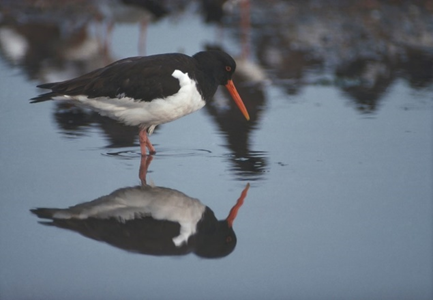Spring Migrants at RSPB Lochwinnoch
Now that winter has gone and spring is here, it's time to welcome our summer visitors to the reserve. We’ll say goodbye to winter migrants such as Whooper Swans, Wigeons, Goldeneyes and Goosanders, and hopefully say hello to Lapwings, Little Ringed Plovers and Oystercatchers out on the scrape.
On the reserve we have a small number of breeding Lapwings. These stunning waders, with beautiful colours that shimmer in the sunlight, have bred here for the last few years. In fact, three pairs bred on the scrape last year and successfully fledged two young. Lapwings are acrobatic flyers, especially during courtship when they perform a dazzling tumbling display accompanied by their distinctive, electronic-sounding call. We see greater numbers in winter, as birds gather around lowland and coastal estuaries and wetlands.

Image of Lapwing by Graham Goodall (rspb-images.com)
Little Ringed Plovers are among the earliest migrants to return to the UK. They will usually arrive in Scotland by mid-May. They first appeared in the UK in 1938 but have since happily moved in, taking advantage of man-made gravel pits, reservoirs and quarries that provide perfect habitat.
In 2022 and 2023 Little Ringed Plovers successfully bred at the reserve and we are hopeful for them again this year. You may spot them on the scrape foraging for invertebrates, if you are lucky. This dainty little wader has a particular method for foraging: standing still and watching, then running forward and pecking at the mud, then repeating this process all over again. This feeding style is common to many species of plover.

Image of Little Ringed Plover by Ben Hall (rspb-images.com)
You may notice that different wading birds have their own particular method for foraging for food, from visual hunters like Little Ringed Plovers which look for invertebrates on the surface, to Curlews and Snipe, which use their longer bills to probe in the mud and shallow water.
Oystercatchers are another species you may see. These large, striking waders, with orange-red bills and reddish-pink legs, are easily spotted. Most Oystercatchers breed along UK coasts, but in the last fifty years, more have come inland to breed. Oystercatchers unfortunately were not successful in breeding here last year, but fledged one chick in 2022.

Image of Oystercatcher by Chris Gomersall (rspb-images.com)
Many other migrant waders visit the reserve in the spring, summer and autumn months. For example, Common Sandpipers, Ringed Plovers, Greenshanks, Redshanks, Snipe and Curlews have all been seen regularly over the last few years. We have also had a few more unusual visitors, such as Black-tailed Godwits, Ruffs and Whimbrels, and even a Black-winged Stilt in 2022.
During your next visit to the reserve, you never know what you might see on the
scrape!